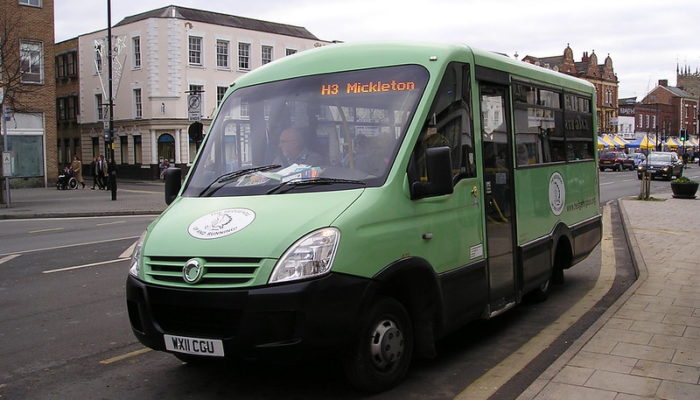
Community transport has played a vital role during the coronavirus pandemic and needs to be kept in good shape for reconnecting our communities and forging a more sustainable and inclusive transport future. Being about community as much as transport means it provides companionship, social interaction, health benefits both physical and mental, in a way that so many people wouldn’t be able to otherwise access.
This has never been more prevalent than during lockdown, when those who rely on community transport have not had their regular routine of getting on the minibus, or in the car, to stay connected and feel like they belong. Community transport providers have stepped up during this crisis to still meet their users’ needs. Unable to operate as normal, they’ve adapted to run new and innovative services to keep people connected, as well as being there for essential journeys that people have still needed to make. They’ve been delivering food and shopping to those unable to leave the house, collecting prescriptions, taking people to and from hospital, providing free journeys for key workers and frequent telephone contact.
This isn’t to say that community transport hasn’t been heavily affected in recent months. Through surveying over 200 of our members during lockdown we found a significant decrease in passenger numbers and, with many volunteers and staff having to self-isolate, the sector has seen a significant downturn in funding and resources, leading to uncertainty and fear about the future.
As we emerge from lockdown and restrictions are lifted, community transport is going to have a huge role to play. Reinstating these services will support people who cannot drive or use conventional passenger transport to come of out lockdown in a safe and sustainable way, which will help our communities recover as well as the economy.
We’re already seeing our members re-starting some of their regular services, albeit with strict social distancing and additional safety measures in place. As more parts of the economy open up it is so vital that our members are given the support they need to come out of this crisis and be part of the recovery.
Like many in transport we don’t just want to recover – we want to reimagine transport so it works better for more people, whilst protecting our planet. We can clearly see the health and well-being benefits our users enjoy by being able to travel using community transport, but we also know the health and well-being impacts of congestion and pollution.
We know a sustainable transport future requires more of us to share journeys with others in vehicles we don’t own without fixed routes or timetables. This pretty much sums up how community transport works today. By using smaller vehicles, in smarter ways to connect people and places we have shown how sustainable, affordable demand-responsive transport can be delivered and still be viable when its core ridership are people who are less mobile and those who live in sparsely populated areas.
Enabling better and more sustainable connectivity for all requires a strong sense of community and a commitment to collaboration – essential ingredients for building back better that are in our sector’s DNA and should be at the foundations of any modern integrated transport network that can meet more needs.
You can find out more about the Community Transport Association at ctauk.org
About the Author
This post was written by Bill Freeman. Bill is the Chief Executive of the Community Transport Association, the national membership body for the community transport sector.
